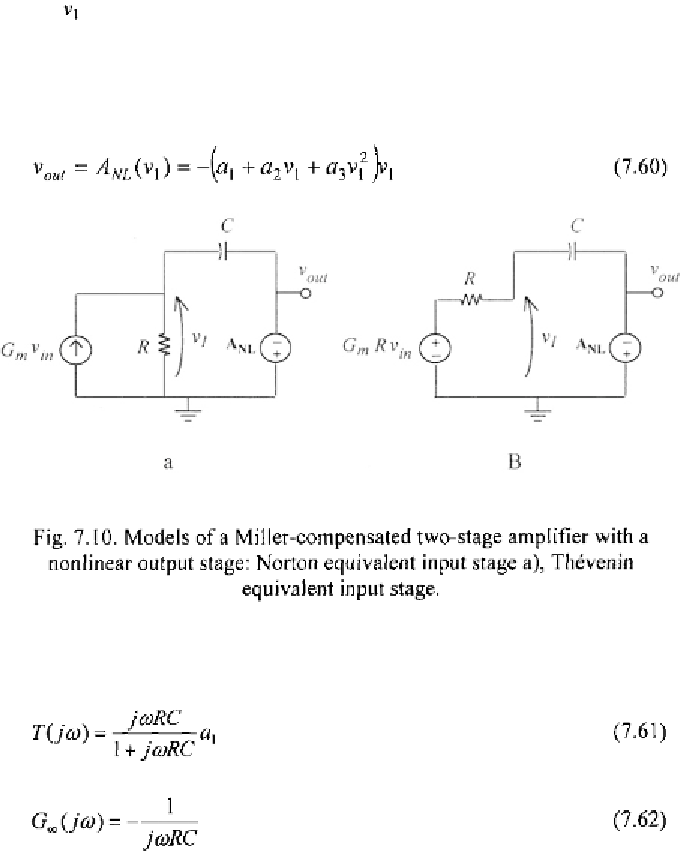Environmental Engineering Reference
In-Depth Information
7.3.2 Two-stage Amplifier with Miller Compensation
Another important case study is the evaluation of distortion for a two-
stage Miller-compensated amplifier. Let us first analyse the open-loop
amplifier in Fig. 7.10a, in which the second stage is nonlinear. In the figure,
R
and are the output resistance and the output voltage of the first stage,
whose transconductance is The second stage, instead, is modeled by a
voltage-controlled voltage source, to preserve simplicity. To this end,
we can also model the first stage with its Thévenin equivalent. The open-
loop output voltage is then expressed by
The return ratio and the asymptotic gain of the amplifier in Fig. 7.10 are
Given the Miller effect, we can consider the pole as being placed at the
output of the first stage. Thus to analyse the circuit, we can use an equivalent
block diagram similar to the one in Fig. 7.8 and depicted in Fig. 7.11 in



